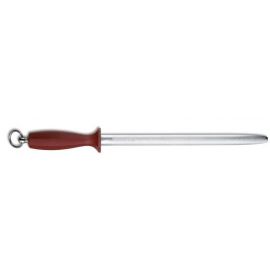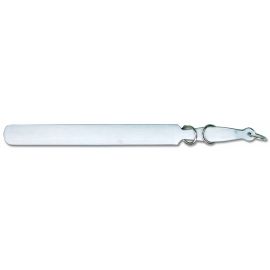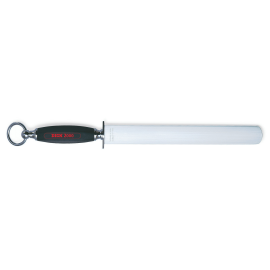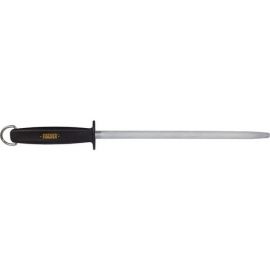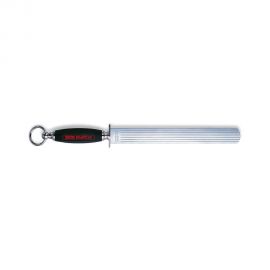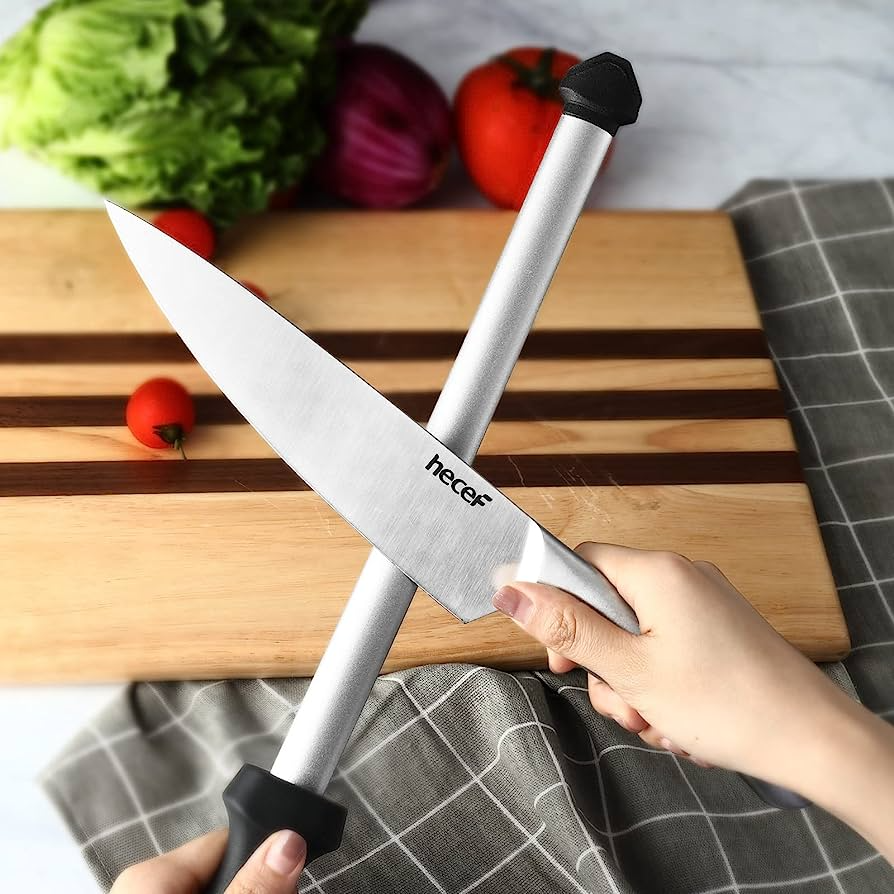
When choosing a steel for knife sharpening, consider the following factors:
1. Material:
Sharpening steels can be made from various materials, such as ceramic, diamond-coated, or traditional steel. Each material has its advantages and is suitable for different types of knives.
- Traditional steel: Traditional steel sharpening rods are often made from high-carbon steel. They are versatile and can be used for most types of knives. They are best suited for regular maintenance and honing of the knife's edge.
- Ceramic: Ceramic sharpening rods are harder than steel rods and can be very effective at maintaining and polishing the knife's edge. They are particularly useful for fine-tuning and finishing the edge.
- Diamond-coated: Diamond-coated sharpening rods are the most aggressive and are ideal for sharpening extremely dull knives or reprofiling the blade. They remove material quickly and effectively.
2. Grit or Coarseness:
Consider the grit or coarseness of the sharpening steel. This determines how much metal will be removed from the blade during sharpening. Finer grits are suitable for honing and refining the edge, while coarser grits are more effective for repairing damaged or dull edges.
3. Knife Type and Hardness:
Different knives have varying degrees of hardness and blade geometry. Harder knives, such as those made of high-carbon or stainless steel, require a harder sharpening steel to effectively realign the edge. Softer knives, like those made of softer stainless steels, can be sharpened with a variety of sharpening steels.
4. Knife Purpose:
Consider the purpose of your knives. If you have predominantly kitchen knives, a versatile sharpening steel suitable for regular maintenance and honing will be sufficient. If you have specialized knives like hunting or tactical knives, you might need a more aggressive sharpening steel to handle their specific requirements.
5. Personal Preference:
Ultimately, the choice of sharpening steel may come down to personal preference. Some people prefer the feel and performance of ceramic or diamond-coated steels, while others prefer the traditional steel rods. Consider what works best for you and your sharpening needs.
It's important to note that a sharpening steel is primarily used for honing and maintaining the edge of a knife. For more significant sharpening or blade repair, using a whetstone or other sharpening systems may be necessary.
Before purchasing a sharpening steel, read product descriptions and reviews to understand its specific features, materials, and recommended uses. Consider seeking advice from experienced knife sharpeners or professionals for further guidance based on your specific knife collection and sharpening requirements.
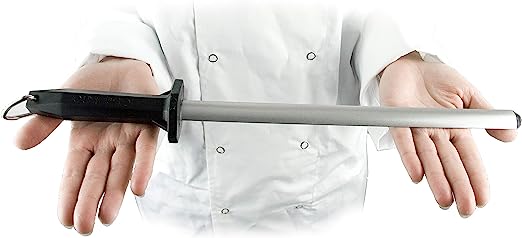
To sharpen a knife using a sharpening steel (also known as a honing steel), you can follow these steps:
1. Choose the right steel:
Sharpening steels come in various materials, such as ceramic, diamond-coated, or traditional steel. Select a steel that matches the type of knife you're sharpening and its edge hardness.
2. Grip the steel:
Hold the steel firmly with your non-dominant hand. Make sure to grip the handle securely to maintain control during the sharpening process.
3. Find the correct angle:
Identify the angle at which the knife was originally sharpened. This is usually around 20 degrees for most Western-style knives. Holding the knife at this angle against the steel will help maintain its edge.
4. Position the steel:
Extend your arm fully, ensuring there is enough space to move the knife along the entire length of the steel without obstruction. Hold the steel vertically with the tip firmly planted on a stable surface.
5. Start sharpening:
With the knife in your dominant hand, place the heel of the blade (the part nearest to the handle) against the top of the steel near the handle. Maintain a consistent angle throughout the process.
6. Swipe the knife:
In one smooth motion, glide the knife down the steel while simultaneously moving it toward the tip. Apply light pressure and ensure the entire length of the blade contacts the steel during the stroke. Maintain the angle as you move along.
7. Repeat on the other side:
Flip the knife over and repeat the same process on the opposite side of the steel, again maintaining the correct angle and performing a smooth, controlled motion.
8. Repeat the process:
Continue alternating sides, swiping the knife against the steel, for a total of 5-10 passes on each side. This process helps align the knife's edge, making it appear sharper.
Discover our extensive selection of high-quality sharpening steels on our website. Choose from various types, including honing steel, ceramic rods, diamond-coated options, and more. Find the perfect steel to suit your sharpening needs, whether for kitchen knives, hunting blades, or specialty tools. Achieve exceptional results and maintain the longevity of your blades with our diverse range of steels. Explore our collection now to elevate your sharpening game.



